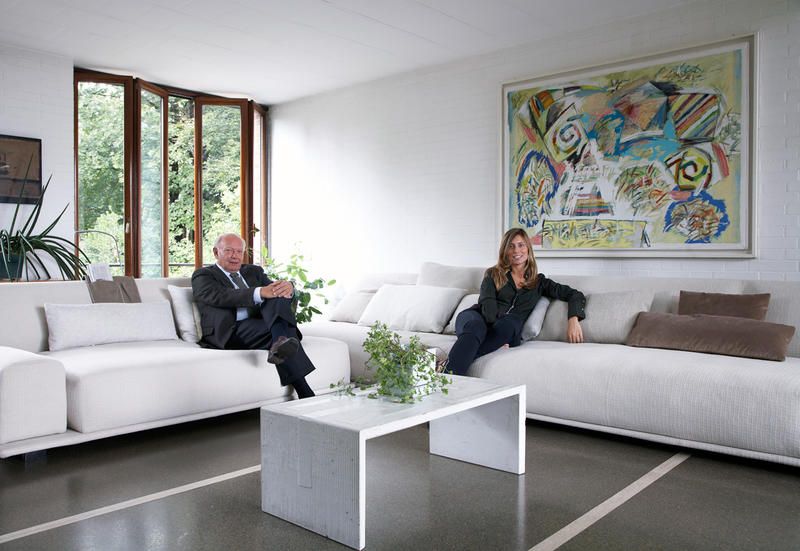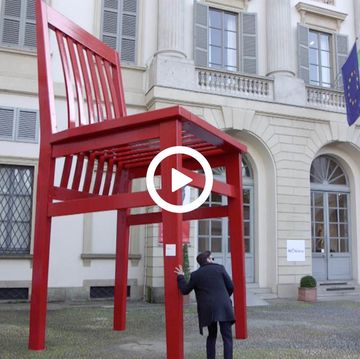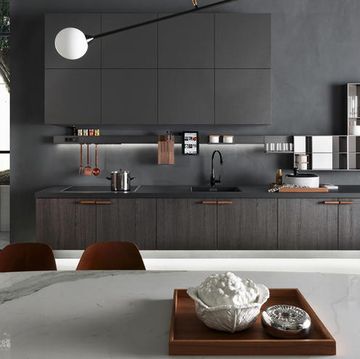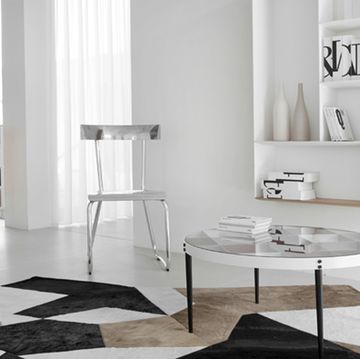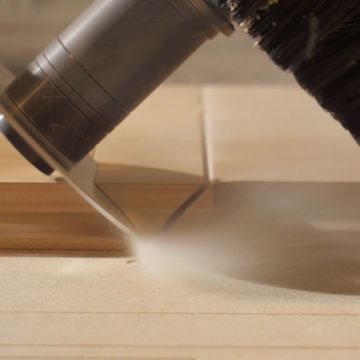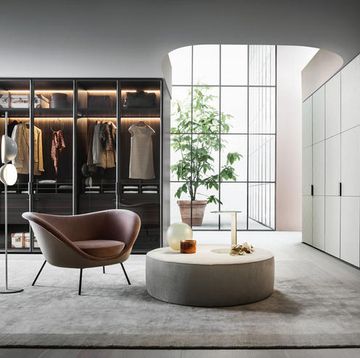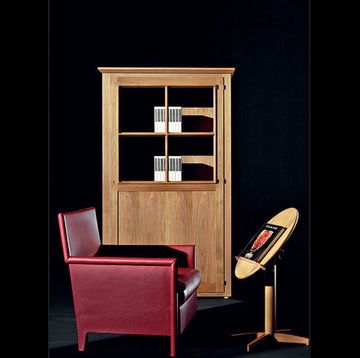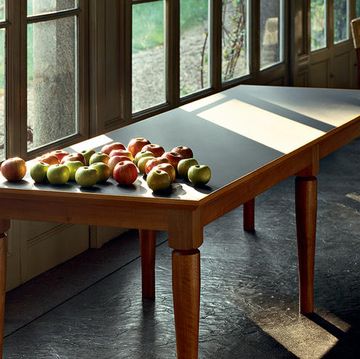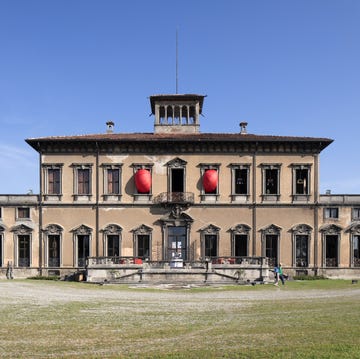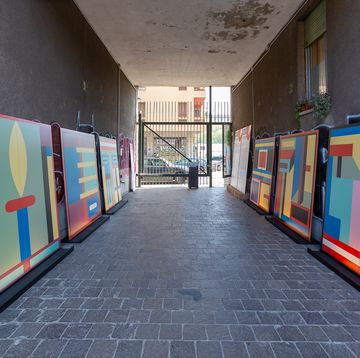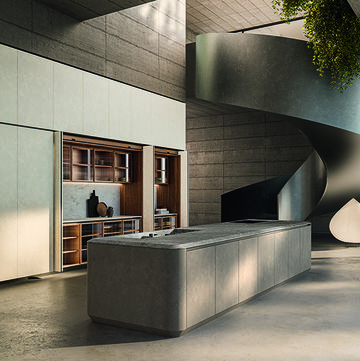Molteni has celebrated 80 years in business. What have been the essential milestones of the company and what are the distinctive features that have characterised it in the past and continue to do so today?
The history of the birth of the company coincides with the story of my grandparents’ lives. Angelo, born in 1912, inherited his passion for wood from his uncle before the war, who instilled in him the art of transforming it into beautiful, useful objects, in a fertile terrain and with a centuries-old tradition like that of Brianza, where fine furniture has always been produced, initially for the local aristocracy and later for the upper classes. My grandfather was a carpenter and had a small craftsman’s workshop – Arredamenti of Angelo Molteni – which had manufactured goods for third parties since 1934. My grandmother, who had attended a vocational school, and was good at keeping paperwork in order and managing books, would regularly pass by there on her bicycle to get to the tram stop. Destination: Milan. She was a modern woman, who worked for a fabric company. They got married in 1942 and in the meantime the company began to grow. In the 1950s, Molteni&C was already a leader in Europe, with more than 200 employees, and produced traditional furniture. In 1955 it witnessed a turning point as it tried its hand at making modern furniture for the very first time, with pieces inspired by Scandinavian designs, conceived by Werner Blaser and Carlo De Carli, and the production evolved, from a small-scale artisanal affair to reach industrial scale. In 1968, Luca Meda was appointed as art director, perhaps one of the first people to fill such a role in the sector. In the 1970s, the company continued to grow, also thanks to the contract business, and through several new acquisitions, it opened its first overseas branches. At first it forged partnerships with the big names in Milanese architecture and then moved on to operate in international circles. Since then, many companies have followed us in this adventure and today the design segment is undoubtedly an important one, which flies the flag of fine Italian production in the world. But one thing has always remained the same: quality, the fil rouge of the Group, the only element that holds complementary sectors and brands together. The Group encompasses Molteni&C which produces furniture for the home, Unifor, specialised in solutions for the office environment, Dada which makes kitchens and Citterio which manufactures both office furniture and separé walls. Today the Group has four production sites in Italy, one of which is completely dedicated to the contract sector. It also boasts 120 product lines, 161,000 square metres of indoor production surface area and four R&D centres, with 5% of its income invested each year in research. The production processes, 100% Made In Italy, are all vertically integrated, guaranteeing total control over the quality.
Interiors, design, architecture. Historically speaking, these are the three areas in which Molteni has always been active, working with big designers including Pritzker Prize award winner, Aldo Rossi. Which criteria have been used in the past to choose the designers and what, thinking about your current partnership with Ron Gilad, has changed today?
In the Molteni Group, the link with architecture is very strong and synergic, thanks also to the presence of the brand Unifor which has always worked with the most important international architects. No less than 5 winners of the Pritzker Prize have worked with us (Aldo Rossi, Jean Nouvel, Álvaro Siza, Renzo Piano and Norman Foster), all extremely important from the point of view of innovation, and this has been possible thanks to our investments in research and development, which are the real heritage of our companies. Today, from this angle, nothing has changed: we still work with great architects who are renowned all over the world, such as Patricia Urquiola, and also with young, brilliant designers such as Ron Gilad, Costance Guisset and Charlotte Guillard. Always in pursuit of quality living solutions.
For a few years now, Molteni has been re-releasing the furniture by Gio Ponti, even going as far as to industrialise pieces that have never been serial-produced before. How do you go about engineering furniture of this calibre and why did you decide to do so?
The decision to re-release Gio Ponti was primarily an ethical choice. He was a great worker, a multi-faceted, eclectic figure, an architect, designer, art director, all rolled into one. In his career he had designed furniture for private homes which, without the intervention of Molteni&C, would have been lost, as they had never been industrially produced, so depriving us forever of a legacy of Milanese architecture and design which belongs to the cultural heritage of Italy. Luckily, things turned out differently. In 2012, Molteni&C renewed its interest in the masters, which had been in the company’s DNA since the 1950s, with a project that involved re-releasing furniture designed by the great architect of the 1900s: a collection, presented for the very first time during the Salone del Mobile, only produced after a long course of research, selection and study under the artistic direction of Studio Cerri & Associati and thanks to the collaboration of the Gio Ponti Archives, with which we have an exclusive agreement. Each year, since then, we have re-released one or more products, enriching the collection based on whatever we deem to be most coherent with our range of products for the total living market and in line with the trends of contemporary living at that moment. The production has remained artisanal, loyal and coherent with the thought of Gio Ponti, and includes various manual phases, such as the lacquering process, in a bid to respect the spirit of the furniture and not only its aesthetics. We have only introduced a few technical improvements, where necessary, such as full extension drawer slides. This is why we have never wanted to produce limited editions. It would go against the principles of design, which means large-scale production. But each piece is accompanied by a progressive number and a certificate of authenticity which also recounts the biography of Gio Ponti.
Made in Italy and internationalisation. For some time now, Italian design has begun exporting, becoming a point of reference all over the world. To what extent is this process affecting the way in which furniture is designed and how much of a difference is it making to the group’s sales volume?
Our design has been international for a long time. As early as in the 1980s we strived to join forces with the most important names in the design world, partners who came from all four corners of the earth. This enabled us to develop a global outlook: Think global, act local. Then there is also our manufacturing ability: in some markets such as the Far East where, for example, they adore marble, thanks to our tailor-made product, we are capable of offering finer finishes and materials. Today the export business of the Molteni Group accounts for 75%, and is constantly growing in over 80 countries worldwide. In the first three months of 2015 alone we opened 12 new single brand stores, including those in Tokyo, Madrid, Singapore, Toronto, Chicago, Copenhagen and Pasadena, in addition to our 27 Flagship Stores. Thanks to our Dada brand, a company we purchased in 1979, today we manage to cover all the environments of the home, from the living room to the sleeping area, and even the kitchen, offering an imprint of Italian lifestyle that effectively wins over the foreign markets due to its charm, and of course its excellent quality.
Tailor-made and custom-made are two terms we are seeing used more and more when talking about Italian furniture manufacturing companies. Does Molteni have a contract division?
In the late 1970s, when we worked on furniture for two embassies in Saudi Arabia, our contract business took off, introducing us to large projects in Italy and abroad that required us to design turn-key solutions for public and working spaces, such as hotels, museums, ships, chains of stores and prestigious jewellery shops, hospitals and theatres. The renovation of Teatro la Fenice in Venezia, large cruise ships for the most important international companies and hotels and residences all over the world designed by important architectural firms such as Foster+Partners, Studio Urquiola, Studio Herzog & de Meuron, today bear the name of Molteni&C, with the increasing involvement of our Dada kitchens.
Molteni, like other successful Italian family businesses, has launched an interesting phase of generational changeover. What does it mean to you to be part of this process?
A huge responsibility, but also an unmissable opportunity. Today there are five of us from the third generation of the family working in the various companies within the Group. We complement one another in terms of our training, mentality and interests, but we are all united by several common values handed down to us by our rather strict upbringing firstly at the hands of my grandfather and later on the part of my father and uncles. A savoir-fare passed down through the generations. The exhibition 80!Molteni, which has celebrated our important anniversary in Milan, is also based on this same concept: a pathway of knowledge for all of us, the young people, together with all our workers, which allows us to understand what has happened in the past and, perhaps get a better idea of what will happen in the future.
Is this why you recently opened the Molteni Museum?
On 20 November 2015, the new museum of the Molteni Group designed by Jasper Morrison, with the coordinated image studied by Studio Cerri & Associati was officially opened in Giussano inside the Compound which not only hosts the production, but also the Glass Cube by Ron Gilad and the QallaM multimedia area designed by Patricia Urquiola. The Museum reiterates themes and patterns of the exhibition 80!Molteni set up in the Gallery of Modern Art in Milan during the last Salone del Mobile and traces the story of the group with the permanent exhibition of 48 iconic products and original prototypes from the collections of Molteni&C, Dada, Unifor and Citterio. Located inside an industrial building from the 1950s renovated first by Aldo Rossi and Luca Meda in 1986 and, again in 2004, by Studio Cerri & Associati, the Museum is a vibrant, interactive place, where the past stands comfortably alongside the present, taking it by the hand to empower the future.
At the opening: Carlo Molteni, Chairman and Ceo of the Molteni Group, and Giulia Molteni, Head of marketing and communication of Molteni&C and Dada.

